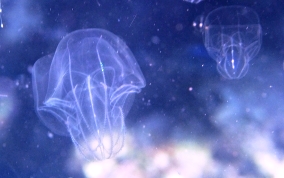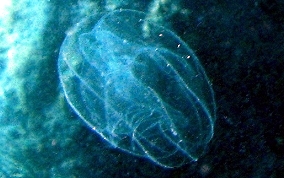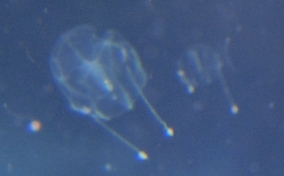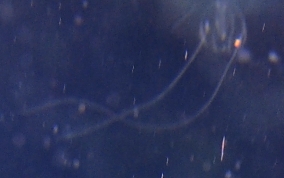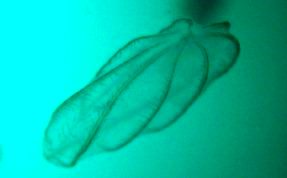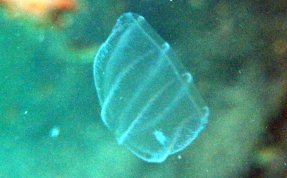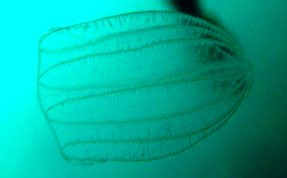Comb Jelly
Mnemiopsis mccradyi , Sea WalnutBeroe ovata Flattened Helmet Jelly
Ocyropsis crystallina - Winged Comb Jelly
Euplakamis sp. - Sea Gooseberry
Comb Jellies are not real Jellyfish.
Jellyfish are the Phylum Cnidarian which they share
with hydroids and
anemones, all of which have stinging tentacles.
Comb Jellies are generally no more than an inch or two in diameter and have no more than two
sticky filaments.
They travel the open oceans near the surface. Unlike jellyfish that pulsate water to gain movement, the comb jelly's eight rows of little "hairs" are used to beat the water to co-ordinate with wave action to move themselves along.
Comb jellies are
very fragile, up to 96% water, but voracious
predators of other jellies.
As they swim, the
comb rows diffract light to produce a neon, rainbow
effect. These jellies are bio-luminescent . When disturbed,
they produce a blues green glow. The most commonly seen are the Sea Walnuts. The Flattened Helmet Jelly was spotted in the mangroves.
Often masses of these jellies are found floating
near the surface of the water. Most are about 1 inch in diameter.
The Sea Gooseberry's long filaments are not for
stinging, rather they have a sticky adhesive that
traps prey and the filament is then retracted
bringing the prey to the jellies mouth. Not all Comb
Jellies have filaments, and never more than two.


